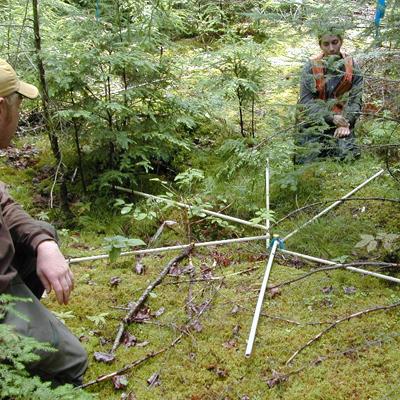Relationships between Nonnative Invasive Plant Distribution, Silvicultural Treatment, and Soil Drainage in the Northern Conifer Forest

Forest harvesting and fragmentation may promote invasion by nonnative plants, and forest managers are concerned about protecting forest ecosystems against this threat. Plant invasions may cause serious changes in forest species composition by outcompeting native vegetation. NSRC researchers investigated relationships among nonnative invasive plants, soil drainage, tree canopy openness, and harvest type and intensity in a mixed conifer forest on the Penobscot Experimental Forest in Maine.
Researchers studied 20 forest stands, managed using various long-term silvicultural treatments (including no harvest), and 2 additional unmanaged stands on former agricultural sites. They measured density and percent cover of woody plants up to two feet tall, herbaceous plants, mosses, liverworts, and lichens. Percent canopy openness was determined from digital photographs, and drainage was determined from soil pits.
The former agricultural area had less leaf litter, a thinner soil organic layer, and greater hardwood basal area. The agricultural sites and the unregulated (more heavily cut) harvest treatment had the greatest abundance and diversity of understory plants, while the shelterwood and no-harvest treatments had the least abundance and diversity. Invasive plants were not plentiful in the managed stands, but seedlings of glossy buckthorn and shrub honeysuckle were found in the unregulated harvest treatment. Invasive plants were abundant in the former agricultural stands and also included Japanese barberry, Oriental bittersweet, multiflora rose, and European buckthorn. Invasion by nonnative plants seems to be strongly related to a land use history that is common in other areas of the Northern Forest. This research can be applied to management of mixed wood forests throughout the region.
Download printable version [PDF]
Download full final report [PDF]
